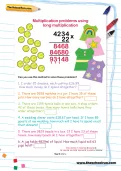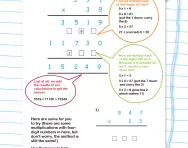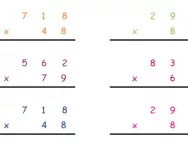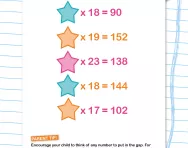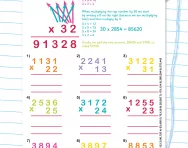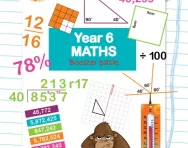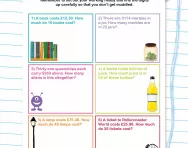TheSchoolRun.com closure date
As we informed you a few months ago, TheSchoolRun has had to make the difficult decision to close due to financial pressures and the company has now ceased trading. We had hoped to keep our content available through a partnership with another educational provider, but this provider has since withdrawn from the agreement.
As a result, we now have to permanently close TheSchoolRun.com. However, to give subscribers time to download any content they’d like to keep, we will keep the website open until 31st July 2025. After this date, the site will be taken down and there will be no further access to any resources. We strongly encourage you to download and save any resources you think you may want to use in the future.
In particular, we suggest downloading:
- Learning packs
- All the worksheets from the 11+ programme, if you are following this with your child
- Complete Learning Journey programmes (the packs below include all 40 worksheets for each programme)
You should already have received 16 primary school eBooks (worth £108.84) to download and keep. If you haven’t received these, please contact us at [email protected] before 31st July 2025, and we will send them to you.
We are very sorry that there is no way to continue offering access to resources and sincerely apologise for the inconvenience caused.
Multiplication problems using long multiplication
How do you do long multiplication in KS2?
Long multiplication, also known as column multiplication, is a method where numbers, typically a two- or three-digit number, are multiplied by another larger number in a written format.
Here's a simple overview of the steps for long multiplication:
- Write the numbers one on top of the other, aligning them on the right.
- Multiply each digit of the bottom number by each digit of the top number, starting from the right.
- Write the results below the line, shifting each result one place to the left for each digit in the bottom number.
- Add up all the numbers to get the final answer.
What is an example of long multiplication?
Here is a visual example of long multiplication:
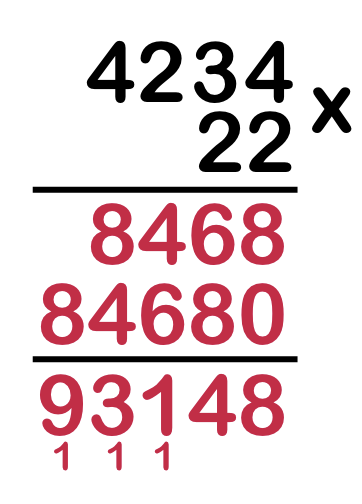
You can see that we have multiplied each digit of the bottom number (22 by each digit of the top number (4234), starting from the right.
The smaller numbers underneath the final answer represent the tens digits that needed to be carried over to the next part of the sum. For instance, 6 + 8 = 14. The ten (1) was carried across and the unit (4) remains in the final answer.
What age do children learn long multiplication?
Typically introduced in Year 5 and Year 6, long multiplication becomes prominent once children are familiar with the grid method. The grid method aids in reinforcing the understanding of place value and the multiplication of multiples of ten and one hundred.
Once your child has grasped these concepts, long multiplication will be taught to them as a swifter and more efficient technique.
For more support with KS2 maths, check out our hub page, or try a new challenge such as this Long multiplication worksheet for Year 6.
